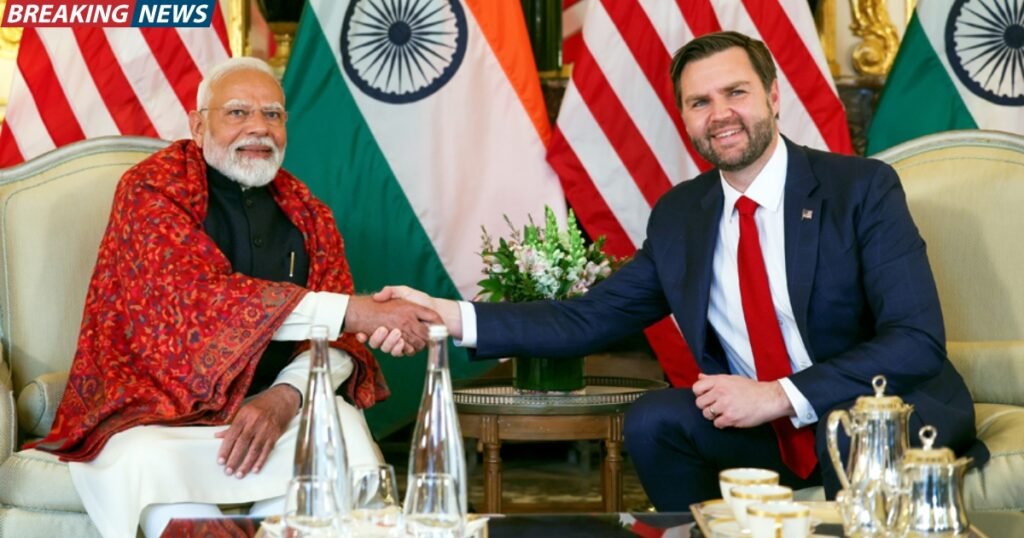
U.S. Vice President JD Vance is on an important four-day visit to India to strengthen ties between the two countries. As trade tensions rise under President Donald Trump’s tough policies, this trip comes at a critical time. His visit combines official meetings with personal interactions to ease growing strains in U.S.-India relations. Moreover, Trump’s aggressive trade approach has shaken global markets and added pressure to international partnerships. Therefore, Vance’s mission focuses on rebuilding trust and cooperation through direct engagement and open dialogue with Indian leaders.
Trade Discussions Amid Tariff Tensions
A key part of Vice President JD Vance’s visit is tackling the possible U.S. tariffs on Indian imports. President Trump has called India a “very big abuser” of trade, pointing to its high tariffs on American products. In turn, India has offered to lower tariffs on more than half of its U.S. imports worth $41.8 billion in 2024 to help reach a fair-trade deal. During the visit, Vance and Prime Minister Narendra Modi plan to work toward a strong agreement and aim to boost trade to $500 billion by 2030.
Strategic Alliances and Defense Cooperation
Besides trade, Vice President JD Vance’s visit highlights the strong U.S.-India partnership, especially in countering China’s rising influence in the Indo-Pacific. Both countries plan to boost cooperation in defense, technology, and innovation. India also looks to buy more U.S. defense equipment and expand joint military exercises. This move supports the goals of the Quad alliance, which also includes Japan and Australia.
Immigration and Workforce Dynamics
Immigration is another key topic during Vice President Vance’s visit, especially for Indian professionals working in the U.S. Since Indians receive nearly 70% of H-1B visas each year, changes in U.S. immigration policy could greatly affect India’s overseas workforce. Therefore, Vance and Prime Minister Modi are likely to discuss ways to keep visa programs stable and find solutions for issues like the deportation of undocumented Indian immigrants.
Personal Ties and Cultural Engagements
Vice President Vance’s visit also includes a personal touch, as he travels with his wife, Usha Vance, who has Indian roots, and their family. They plan to visit cultural sites like the Taj Mahal and attend a family wedding in Jaipur. These activities help strengthen cultural connections between the U.S. and India, while also showing how personal relationships can support stronger diplomatic ties.
Looking Future
Although this visit may not result in major agreements, it plays an important role in preparing for President Trump’s expected trip later this year for the Quad summit. Vance’s discussions could help shape the future of U.S.-India relations by influencing trade, defense partnerships, and immigration policies. This visit marks a key step toward building stronger ties in the years ahead.
Final Thoughts
Vice President Vance’s visit shows a strong commitment to U.S.-India cooperation. By focusing on trade, defense, immigration, and cultural ties, the trip sets the stage for future collaboration. As global dynamics change, this engagement helps both nations align their goals and strengthen their strategic partnership.
